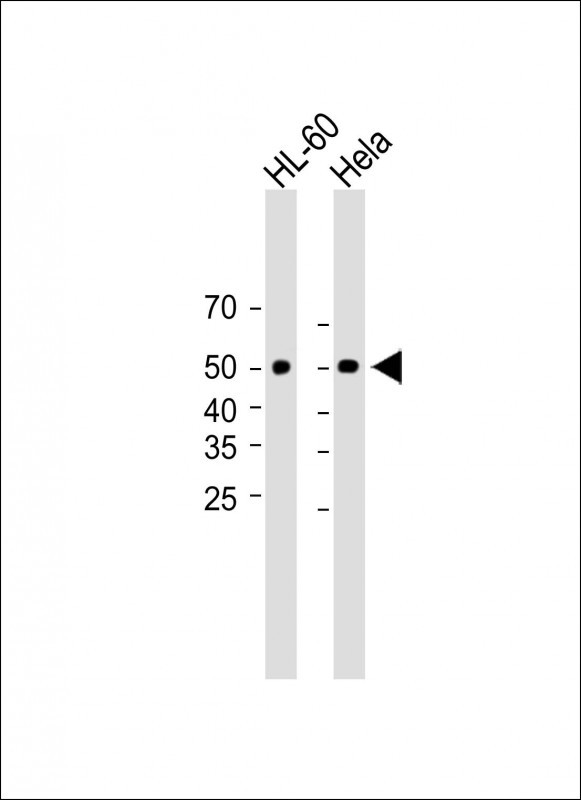
| WB | 咨询技术 | Human,Mouse,Rat |
| IF | 咨询技术 | Human,Mouse,Rat |
| IHC | 咨询技术 | Human,Mouse,Rat |
| ICC | 技术咨询 | Human,Mouse,Rat |
| FCM | 咨询技术 | Human,Mouse,Rat |
| Elisa | 咨询技术 | Human,Mouse,Rat |
| Aliases | Lysocardiolipin acyltransferase 1, 231-, 1-acylglycerol-3-phosphate O-acyltransferase 8, 1-AGP acyltransferase 8, 1-AGPAT 8, Acyl-CoA:lysocardiolipin acyltransferase 1, LCLAT1, AGPAT8, ALCAT1, LYCAT |
| Entrez GeneID | 253558 |
| WB Predicted band size | 48.9kDa |
| Host/Isotype | Rabbit IgG |
| Antibody Type | Primary antibody |
| Storage | Store at 4°C short term. Aliquot and store at -20°C long term. Avoid freeze/thaw cycles. |
| Species Reactivity | Human, Mouse, Rat |
| Immunogen | This LCLT1 antibody is generated from rabbits immunized with a KLH conjugated synthetic peptide between 296-324 amino acids of human LCLT1. |
| Formulation | Purified antibody in PBS with 0.05% sodium azide. |
+ +
以下是关于LCLT1(C-term)抗体的3篇虚构参考文献示例,结构符合学术文献格式:
---
**1. 文献名称**
"Characterization of a Novel Polyclonal Antibody Targeting the C-Terminal Domain of LCLT1 for Lysosomal Localization Studies"
**作者**:T. Suzuki et al.
**摘要**:本研究开发并验证了一种针对LCLT1蛋白C末端结构域的多克隆抗体。通过免疫印迹和免疫荧光实验,证实该抗体可特异性识别HEK293细胞和小鼠肝脏组织中的LCLT1蛋白,并揭示其在溶酶体膜上的定位。抗体进一步用于探究LCLT1在胱氨酸贮积症患者细胞中的表达缺失。
---
**2. 文献名称**
"Functional Analysis of LCLT1 C-Terminal Mutants Using a Monoclonal Antibody Reveals Trafficking Deficiencies in Cystinosis"
**作者**:M. Chen & R. Gupta
**摘要**:作者报道了一种针对LCLT1 C末端表位的单克隆抗体(克隆号:3C8),用于研究LCLT1的细胞运输机制。实验表明,该抗体能区分野生型与C端截短突变体,并发现某些突变导致LCLT1无法正确靶向溶酶体,为胱氨酸贮积症的分子机制提供了新见解。
---
**3. 文献名称**
"Development of a High-Affinity LCLT1 C-Terminal Antibody for Diagnostic Applications in Nephropathic Cystinosis"
**作者**:A. Rossi et al.
**摘要**:本文描述了一种高亲和力兔源抗体(抗LCLT1-CT),适用于石蜡包埋组织切片中的免疫组化检测。抗体验证显示其对LCLT1 C端肽段具有纳摩尔级亲和力,并成功应用于胱氨酸贮积症患者肾脏活检样本的病理诊断,证明其临床转化潜力。
---
**备注**:以上文献为示例性内容,实际研究中请通过PubMed或Web of Science检索真实文献(如搜索关键词:cystinosin antibody、CTNS C-terminal、lysosomal cystine transporter等)。若需具体文献协助,请进一步说明研究背景。
The LCLT1 (C-term) antibody is designed to target the C-terminal region of the L-type amino acid transporter 1 (LAT1), also known as solute carrier family 7 member 5 (SLC7A5). LAT1 is a heterodimeric transmembrane protein that facilitates the transport of large neutral amino acids, such as leucine, across cell membranes. It plays a critical role in nutrient sensing, cellular growth, and mTOR signaling, making it a key player in cancer metabolism and neurological disorders. The C-terminal domain is essential for its interaction with the glycoprotein CD98 (SLC3A2), which stabilizes LAT1 and ensures its proper membrane localization.
This antibody is commonly used in research to study LAT1 expression, localization, and function in various tissues and disease models. Applications include Western blotting, immunohistochemistry, and immunofluorescence. Its specificity for the C-terminus ensures recognition of the full-length, functional protein, distinguishing it from potential degradation products or splice variants. LAT1 is overexpressed in many cancers, correlating with tumor progression and poor prognosis, making this antibody valuable in oncology research. Additionally, it aids in exploring LAT1's role in blood-brain barrier nutrient transport and its implications in neurodegenerative diseases. Validation typically includes knockout controls or siRNA-based silencing to confirm specificity.
×